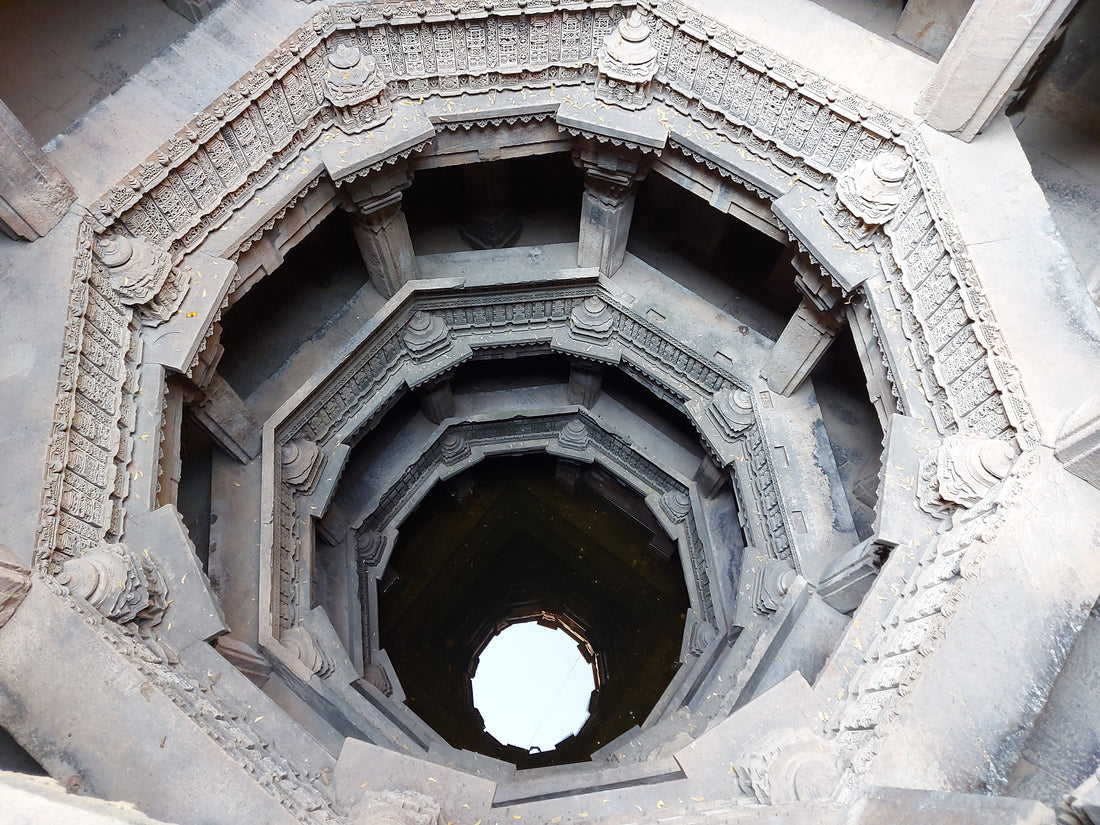
Stepwells: Marvels of Form and Function
With its history going back several centuries, Ahmedabad is graced with heritage monuments that stand out for their intricate stone carvings. Mosques and mausoleums, palaces and pavilions, constructed of stone, are embellished with fine carvings. Adding another facet to the city’s rich architectural heritage are stepwells that are marvels of architecture and design as they blend form with functionality and beauty.
 Given the long dry summer faced by regions in many parts of India and as the land was traditionally dependent on rainfall and river water, an ingenious solution was provided by the construction of stepwells. As the name suggests, stepwells are wells that are accessed by a flight of steps and go deep into the earth.
Given the long dry summer faced by regions in many parts of India and as the land was traditionally dependent on rainfall and river water, an ingenious solution was provided by the construction of stepwells. As the name suggests, stepwells are wells that are accessed by a flight of steps and go deep into the earth.
Interestingly as the water level dipped in the summer people would walk down more steps to access the water. On the other hand, when there was rain in the monsoon months, the water level of the well would rise and be accessible from higher steps. In centuries past, groups of travellers would stop at the stepwells and there was ample space for them to rest along the spaces in the levels going down to the water.
There are interesting variations in step wells such as in the presence of a temple or mosque next to it; in their carvings and inscriptions; in their form in terms of shape (circular, rectangular, square); in the number of levels, flights of steps, as well as additional staircases; in their ornamentation and more.
 Stepwells were graced with carvings that reflected the beliefs of the patron and skill of artisans. The Dada Hari Ni Vav at Asarwa, Ahmedabad, (1499 AD), has Arabic, Persian and Sanskrit inscriptions, and a mosque beyond the stepwell. The Rudabai Stepwell at Adalaj, (1498A D) a short drive from Ahmedabad, has Sanskrit inscriptions and Hindu iconography.
Stepwells were graced with carvings that reflected the beliefs of the patron and skill of artisans. The Dada Hari Ni Vav at Asarwa, Ahmedabad, (1499 AD), has Arabic, Persian and Sanskrit inscriptions, and a mosque beyond the stepwell. The Rudabai Stepwell at Adalaj, (1498A D) a short drive from Ahmedabad, has Sanskrit inscriptions and Hindu iconography.
The magnificent 11th century Rani ni Vav or the Queen’s Stepwell, located at Patan (famous for double-ikat Patan Patola textiles), about two-hours’ drive from Ahmedabad, is a UNESCO World Heritage Site. It is an elaborate complex of seven storeys with beautifully carved columns, brackets and beams, with elaborate carvings of the Hindu deity Lord Vishnu. Visiting a stepwell gives one an experience of these unique underground monuments.
Text by Brinda Gill, Images by Satyajit Gill
 Join Polly Leonard on a once-in-a-lifetime tour of the textiles of India.12 February to 9 March 2023 . See more details here
Join Polly Leonard on a once-in-a-lifetime tour of the textiles of India.12 February to 9 March 2023 . See more details here
